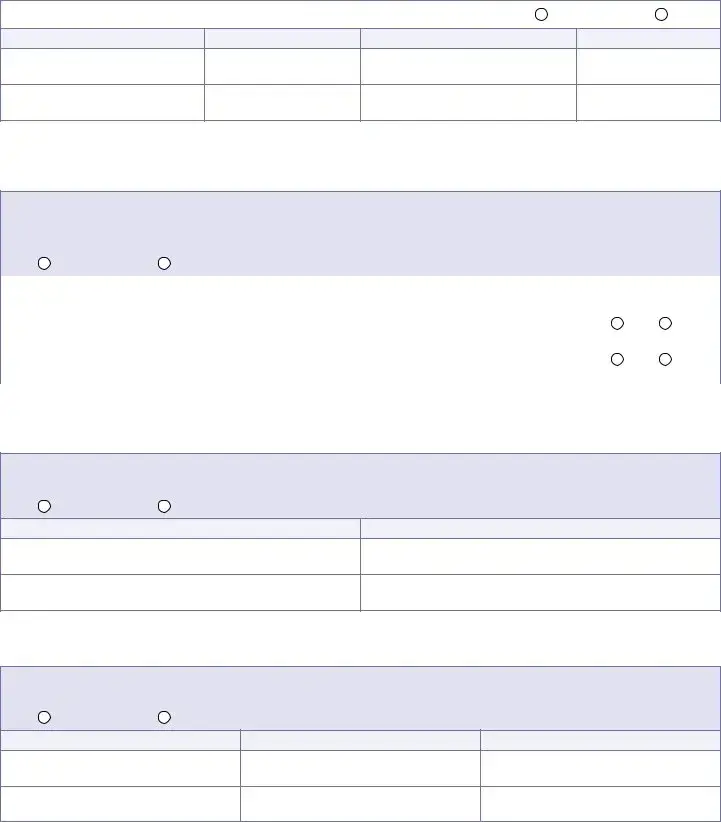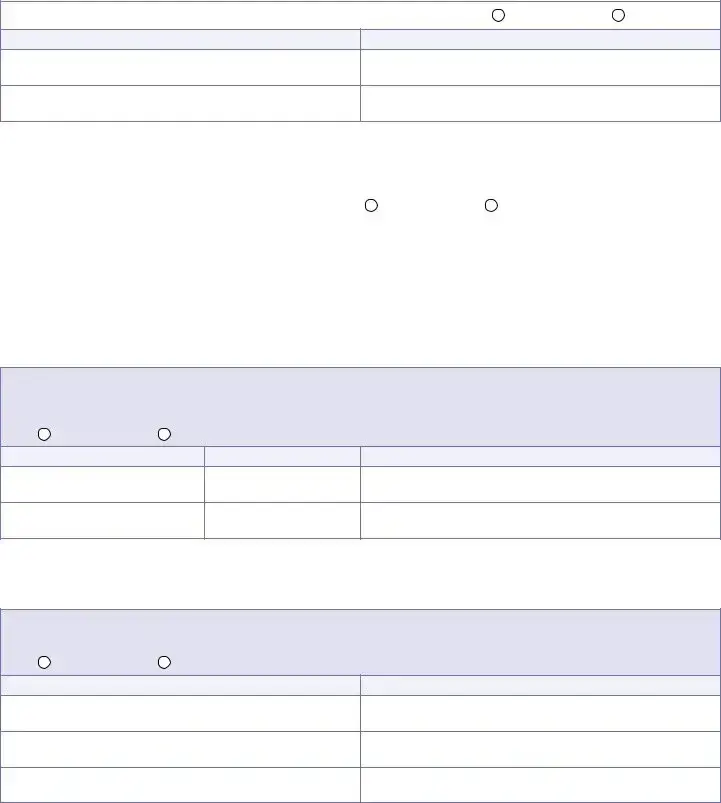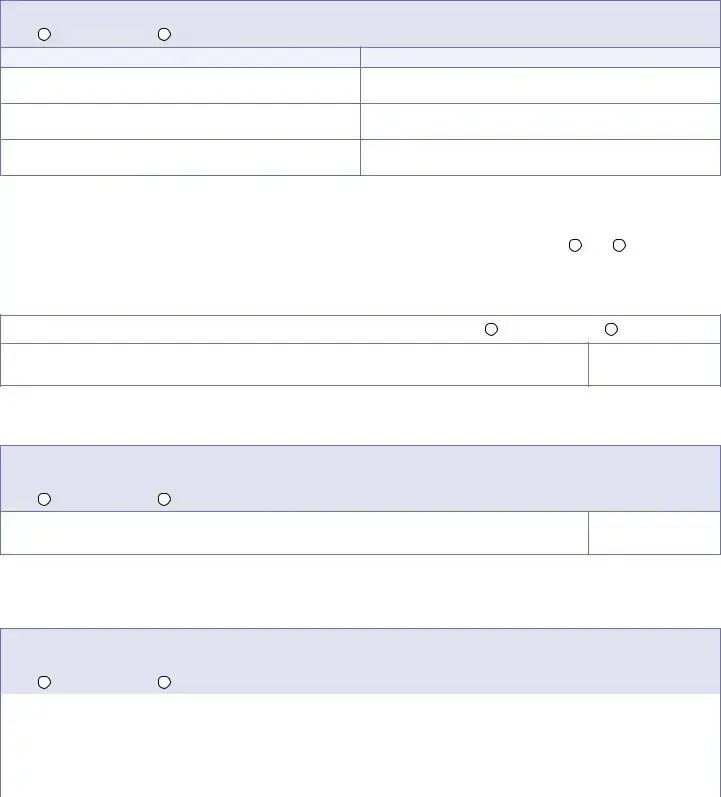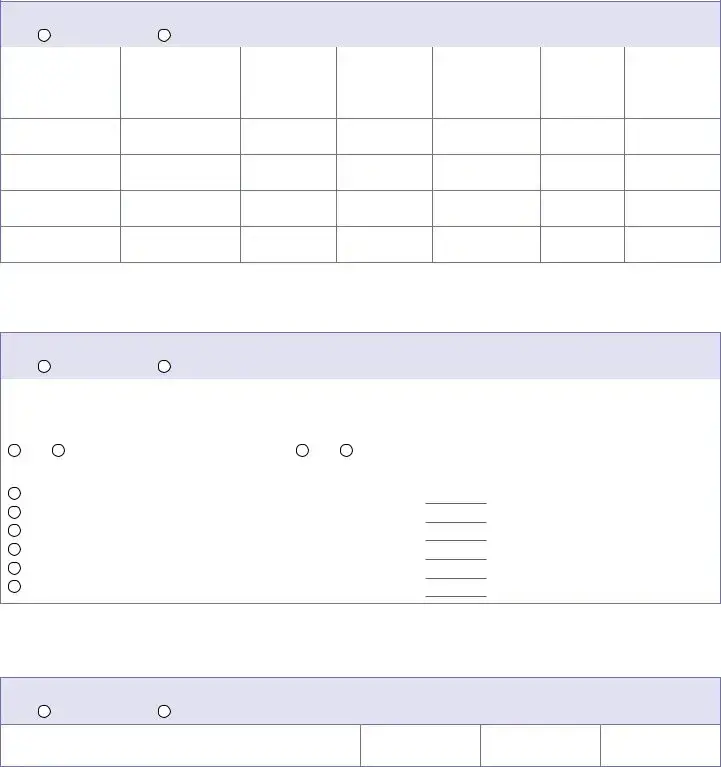DHS-3531-ENG 5-17
MINNESOTA HEALTH CARE PROGRAMS (MHCP)
Application for Medical Assistance for
Long-Term-Care Services (MA-LTC)
■What is this application for?
Use this application to apply for health care coverage for:
■Long-term care (LTC), such as care in a nursing home or intermediate care facility or nursing-facility level of care in an inpatient hospital
■Services to help you stay in your home or other settings in the community through these home and community-based services (HCBS) waiver programs:
•Brain Injury (BI)
•Community Access for Disability Inclusion (CADI)
•Community Alternative Care (CAC)
•Developmental Disabilities (DD)
•Elderly Waiver (EW)
IMPORTANT: You must have an LTC consultation (LTCC) assessment before our program can pay for LTC in a facility or for additional services to help you stay in your home. The LTCC assessment will help you decide what type of care or additional services you need to stay in your home. Call your county agency as soon as possible to schedule an LTCC assessment. Payment for LTC services can only begin starting the date of the LTCC assessment.
Do not use this application to apply for these things:
■Health care coverage other than LTC described above
■Cash or food and nutrition programs
■Health care coverage for family members other than the person applying for LTC
Call your county or tribal agency for the correct application for your situation. The phone numbers for county agencies are listed in Attachment C.
■What do I need to do with this form?
1.Read the Notice of Privacy Practices and Notice of Rights and Responsibilities in Attachment A. Tear them off and keep them.
2.Answer all questions on the application. If you need more space, write the number of the question and the answer on a separate piece of paper. Include it with the application.
3.Sign and date the application.
4.Attach proofs.
5.Mail or take the application to your county or tribal agency. The addresses for county agencies are listed in Attachment C.
Send in your application right away even if you do not have all proofs. We will contact you if we need more information.
■Questions?
If you have questions or need help, call your county or tribal agency. The phone numbers for county agencies are listed in Attachment C. If you are 60 years old or older, you can also call the Senior LinkAge Line® at 800-333-2433. If you have a disability, you can also call the Disability Linkage Line® at 866-333-2466.
651-431-2670 or 800-657-3739
ADA1 (9-15)
For accessible formats of this publication or assistance with additional equal access to human services, write to DHS.info@state.mn.us, call 800-657-3739, or use your preferred relay service.
Clear Form
MINNESOTA HEALTH CARE PROGRAMS (MHCP)
Application for Medical Assistance for Long-Term-Care Services (MA-LTC)
|
Office Use Only |
CASE NUMBER |
WORKER NUMBER |
■Answer all questions the best you can.
■Return the form right away.
■We will contact you if we need more information.
1.Information for the person living in or planning to live in a long-term-care facility or requesting services to help the person live at home or other settings in the community
|
|
|
|
|
|
|
|
|
GENDER |
|
MARITAL STATUS |
|
|
|
|
|
Male |
Female |
Legally separated |
Divorced |
Never married |
Married |
Widowed |
Do you have a Social Security number (SSN)? |
Yes |
No |
|
|
|
|
IF YES, WHAT IS YOUR SSN?
IF NO, HAVE YOU APPLIED FOR AN SSN?
 Yes
Yes  No
No
IF YOU HAVE NOT APPLIED, WHY NOT? (Choose a reason code from the list on Attachment B)
Do you have a guardian or conservator? |
Yes – fill in the following |
No |
|
|
|
NAME OF GUARDIAN OR CONSERVATOR
CITY
|
PHONE NUMBER |
|
|
STATE |
ZIP CODE |
|
|
Are you a veteran or the spouse of a veteran? |
Are you blind, or do you have a physical or mental health condition that limits your ability |
Yes |
No |
|
|
|
|
to work or perform daily activities? |
Yes |
No |
|
|
|
|
|
|
|
|
|
|
|
|
|
|
|
|
|
|
|
|
|
|
|
|
|
|
|
|
|
|
|
|
|
|
|
|
|
|
|
|
|
Are you pregnant? |
|
IF YES, HOW MANY BABIES ARE EXPECTED? |
DUE DATE (MM/DD/YYYY) |
|
Have you had a long-term-care consultation? |
Yes |
No |
N/A |
|
|
|
|
|
|
|
|
|
|
|
|
Yes |
|
No |
Don't know |
|
|
|
|
|
|
|
|
|
|
|
|
|
|
|
|
|
|
|
|
What language do you speak most of the time? |
|
|
|
|
|
|
|
|
|
|
|
Do you need an interpreter? |
|
|
|
|
|
|
|
|
|
|
|
|
|
|
|
|
|
|
Yes |
No |
|
|
|
|
|
|
|
|
|
|
|
|
|
|
|
|
|
|
|
|
|
|
|
RACE (check all that apply) |
|
|
|
|
|
|
|
|
|
|
|
|
|
|
|
|
|
|
White |
|
|
Black or African American |
|
|
American Indian or Alaska Native |
Asian Indian |
OPTIONAL |
|
|
Chinese |
|
|
Filipino |
|
|
|
|
Japanese |
|
|
|
|
|
|
Korean |
|
|
Vietnamese |
|
|
Other Asian |
|
|
|
|
Native Hawaiian |
|
|
|
|
|
Guamanian or Chamorro |
INFORMATION |
|
|
|
|
|
|
|
|
|
|
|
|
|
|
|
Samoan |
|
|
Other Pacific Islander |
|
|
Other: |
|
|
|
|
|
|
|
|
|
→ |
|
|
|
|
|
|
|
|
|
|
|
|
|
|
|
|
|
|
|
|
|
|
|
|
|
|
|
|
|
|
|
|
|
|
|
|
|
|
|
|
|
|
|
|
|
|
|
|
|
|
|
|
|
|
|
|
|
|
|
|
|
HISPANIC OR LATINO ETHNICITY (check all that apply) |
|
|
|
|
|
|
|
|
|
|
|
|
|
|
|
|
|
Mexican |
Mexican American |
Chicano or Chicana |
Puerto Rican |
|
Cuban |
Other: |
|
|
|
|
|
|
|
|
|
|
|
|
|
|
|
|
|
|
|
|
|
|
|
|
|
|
|
|
|
|
|
|
|
|
|
|
|
|
|
|
|
|
|
|
2. Are there other family members living with you? |
Yes – fill in below |
No |
|
|
|
Date of birth
(MM/DD/YYYY)
3.If you or anyone in your family is an American Indian or Alaska Native, some income and assets might not count toward your eligibility and you might not be required to pay premiums or copays. Do you want to apply for these exceptions?
 Yes – you need to complete and include Appendix A
Yes – you need to complete and include Appendix A  No
No
4. Address and phone number
STREET ADDRESS WHERE YOU ARE CURRENTLY LIVING |
|
CITY |
|
|
STATE |
ZIP CODE |
COUNTY |
|
|
|
|
|
|
|
|
|
|
|
MAILING ADDRESS (if different) |
|
|
CITY |
|
|
STATE |
ZIP CODE |
COUNTY |
|
|
|
|
|
|
|
|
PHONE NUMBER |
Do you plan to make Minnesota your home? |
Do you currently have medical benefits from another state? |
WHICH STATE? |
|
Yes |
No |
|
|
Yes – fill in the following |
No |
|
|
|
|
|
|
|
|
|
|
|
Are you currently in a long-term-care facility? |
Yes – fill in the following |
No |
|
|
|
|
|
|
|
|
|
|
|
|
|
|
|
|
LONG-TERM-CARE FACILITY NAME
DATE MOVED INTO THIS FACILITY (MM/DD/YYYY)
STREET ADDRESS BEFORE MOVING TO THIS FACILITY
If you have a home, do you plan to return there? |
Yes |
No |
|
|
|
What is your living situation? (choose one)
 I live in a hospital, nursing home, treatment facility or detox center.
I live in a hospital, nursing home, treatment facility or detox center.
 I have my own housing (rent, pay a mortgage or share housing costs with a roommate).
I have my own housing (rent, pay a mortgage or share housing costs with a roommate).
 l live with family or friends because of economic hardship.
l live with family or friends because of economic hardship.
 I live in an emergency shelter.
I live in an emergency shelter.
 I live in a service provider’s housing (foster home or group home).
I live in a service provider’s housing (foster home or group home).
 Unknown
Unknown
 I live in a jail, prison or juvenile detention facility.
I live in a jail, prison or juvenile detention facility.
 I live in a hotel or motel.
I live in a hotel or motel.
 I decline to answer.
I decline to answer.
 I live in a place not meant for housing (anywhere outside, a vehicle, an abandoned building, a bus or train station, or an airport). In which county do you live?
I live in a place not meant for housing (anywhere outside, a vehicle, an abandoned building, a bus or train station, or an airport). In which county do you live?
Page 2 of 11 |
DHS-3531-ENG 5-17 |
5. Are you a U.S. citizen or U.S. national? |
Yes |
No – fill in below |
|
|
|
What is your current immigration status? (Choose a status code from the list on Attachment B, or write in your status below if it is not on the list.)
a. IMMIGRATION DOCUMENT TYPE
d. Did you enter the United States before August 22, 1996?
 Yes
Yes  No
No
e. Have you lived in the United States for five years or more in a qualified status?
(See Attachment B to determine whether you have a qualified status.) |
Yes |
No |
f. DATE OF ENTRY (MM/DD/YYYY) |
g. Do you have a sponsor? |
h. Are you, or is your spouse or parent, a veteran or active-duty member of the military? |
|
|
Yes |
No |
Yes |
No |
|
|
|
|
|
i. Do you want help paying for a medical emergency? |
|
j. Are you getting services from the Center for Victims of Torture? |
Yes |
No |
|
|
Yes |
No |
|
|
|
|
|
|
|
6. Do you want someone to act on your behalf as an authorized representative?
Yes – complete Appendix B |
No |
(You can give a trusted person permission to talk about this application with us, see your information and act for you on matters related to this application, including getting information about your application and signing your application on your behalf.)
7. Do you want help from MA to pay for medical bills from the past three months?
(The start date for MA can go back up to three months from your application date if you have medical bills from that time and meet the MA requirements.)
|
Yes – fill in below |
No |
How many months? |
|
One |
Two |
Three |
You must provide proof of your medical expenses, income and assets in each of the months for which you are requesting coverage.
Refer to the types of proof listed after each of the following questions for examples of acceptable proof for the income and assets you had.
8.How much cash do you or your spouse have on hand, in a safety deposit box, at home and at the facility where you live?
9.Do you or your spouse have savings or checking accounts, money market accounts or certificates of deposit?
You must provide proof of these assets. Proof may be recent account statements or a written statement from your bank showing the current balance or value of accounts.
Page 3 of 11 |
DHS-3531-ENG 5-17 |
10. Do you or your spouse have stocks, bonds or retirement accounts? |
Yes – fill in below |
No |
|
|
|
Company or bank name and address
You must provide proof of these assets. Proof may be copies of bonds, stock ownership, retirement accounts, or documents showing current loan balance owed against the asset.
11.Do you or your spouse own or co-own houses, condominiums, summer or winter homes, cabins, mobile homes, time-shares, rental properties, any real estate, or life estate interests or remainder interests in real property?
Yes – fill in below |
No |
|
|
|
|
|
|
|
|
|
|
|
|
Do you or your spouse |
Owner name(s) |
|
Type of property |
Property address |
live here all year? |
|
|
|
|
Yes |
No |
|
|
|
|
|
|
|
|
|
|
Yes |
No |
|
|
|
|
|
|
You must provide proof of these assets. Proof may be real property tax statements, warranty deeds, quit claim deeds, life estate or other real property agreements or documents showing the amounts owed against the property.
12.Do you or your spouse own or co-own promissory notes, contracts for deed or other property agreements?
You must provide proof of these assets. Proof may be copies of the contract for deed, mortgage, loan contract, or promissory note.
13. Do you or your spouse have any vehicles in your name? Include cars, trucks, vans, motorcycles, motor
homes, campers, boats, snowmobiles, all-terrain vehicles, etc.
You must provide proof of these assets. Proof may be copies of your vehicle title.
Page 4 of 11 |
DHS-3531-ENG 5-17 |
14. Do you or your spouse have an interest in a trust or annuity? |
Yes – fill in below |
No |
|
|
|
You must provide proof of these assets. Proof may be copies of the annuity contract, other documents showing the value of the annuity or copies of the entire trust document.
15. Do you or your spouse have life insurance? |
Yes – fill in below |
No |
|
|
|
Owner name(s) |
Policy number |
Insurance company name and address |
|
|
|
|
|
|
|
|
You must provide proof of these assets. Proof may be a copy of your life insurance policy.
16. Do you or your spouse have a prepaid burial account or burial trust? Include revocable and irrevocable accounts, insurance-funded burials, annuity-funded burials, Cremation Society agreements, burial spaces, burial space items and other funds designated for burial.
Company or bank name and address
You must provide proof of these assets. Proof may be copies of the life insurance policy, burial contracts or other documents showing the current value of the assets.
17.Do you or your spouse have assets currently used for self-employment or in a business in which you or your spouse has an interest?
You must provide proof of these assets. Proof may be current tax documents, business ledgers, or account statements.
Page 5 of 11 |
DHS-3531-ENG 5-17 |
18. Do you or your spouse own or co-own any other assets you have not listed?
You must provide proof of these assets.
19. Do you or your spouse live in a continuing care retirement community? |
Yes |
No |
|
|
|
You must provide proof of these assets. Proof may be a copy of the continuing care retirement contract.
20. Did you or your spouse create a trust in the last 60 months? |
Yes – fill in below |
No |
|
|
|
NAME(S) OF WHO CREATED THE TRUST
DATE CREATED (MM/DD/YYYY)
You must provide proof of these assets. Proof may be copies of the entire trust document.
21.Did you or your spouse buy an annuity, life estate in another person's home, a promissory note, loan or mortgage in the last 60 months?
Yes – fill in below |
No |
|
|
WHAT WAS BOUGHT? |
|
|
|
You must provide proof of these purchases. Proof may be copies of the annuity contract, promissory note, mortgage or loan contract, or life estate, as well as documentation of amounts owed against the property.
22.Did you or your spouse not accept items or income you could have taken, such as an inheritance or a pension, in the last 60 months?
Yes – fill in below |
No |
|
|
|
|
|
|
|
Item(s) you did not take |
Value of the item or income |
Date happened |
|
(MM/DD/YYYY) |
|
|
$ |
|
|
|
|
|
|
|
$ |
|
|
|
|
|
You must provide proof of this income. Proof may be award letters, copies of checks, tax forms or court orders or other documents.
Page 6 of 11 |
DHS-3531-ENG 5-17 |
23. Did you or your spouse sell, trade or give away items or income in the last 60 months?
Yes – fill in below |
No |
|
|
|
|
|
|
|
|
|
|
|
|
|
|
|
|
|
Sold, traded or |
|
Date |
Amount you |
Owner name(s) |
|
Item or income |
Value |
given away? |
To whom? |
were paid |
|
(MM/DD/YYYY) |
|
|
|
$ |
|
|
|
$ |
|
|
|
|
|
|
|
|
You must provide proof of sale of these items. Proof may be accounts showing income given away in the last 60 months or receipts from sale or trade of assets documenting the amount each asset was sold or traded for.
24. Are you working, or do you expect to work in the next month? Include temporary and seasonal work.
|
Yes – fill in below |
No |
|
|
|
|
|
|
|
EMPLOYER NAME |
|
|
|
START DATE (MM/DD/YYYY) |
|
|
|
|
Is this job seasonal? |
|
Has this job ended? |
IF YES, END DATE (MM/DD/YYYY) |
Yes |
No |
|
Yes |
No |
|
|
|
|
|
|
|
Wages and tips before taxes (Choose one and fill in the dollar amount and your hours per week.)
Hourly |
$ |
|
per hour |
Hours per week: |
Weekly |
$ |
|
|
Hours per week: |
Every two weeks |
$ |
|
|
Hours per week: |
Twice a month |
$ |
|
|
Hours per week: |
Monthly |
$ |
|
|
Hours per week: |
Yearly |
$ |
|
|
Hours per week: |
You must provide proof of this income. Proof may be paystubs or a written statement of earnings from your employer if you do not have paystubs.
25. Are you self-employed, or do you expect to be self-employed next month?
You must provide proof of this income. Proof may be most recent income tax returns and all related schedules or business records if taxes are not filed.
Page 7 of 11 |
DHS-3531-ENG 5-17 |
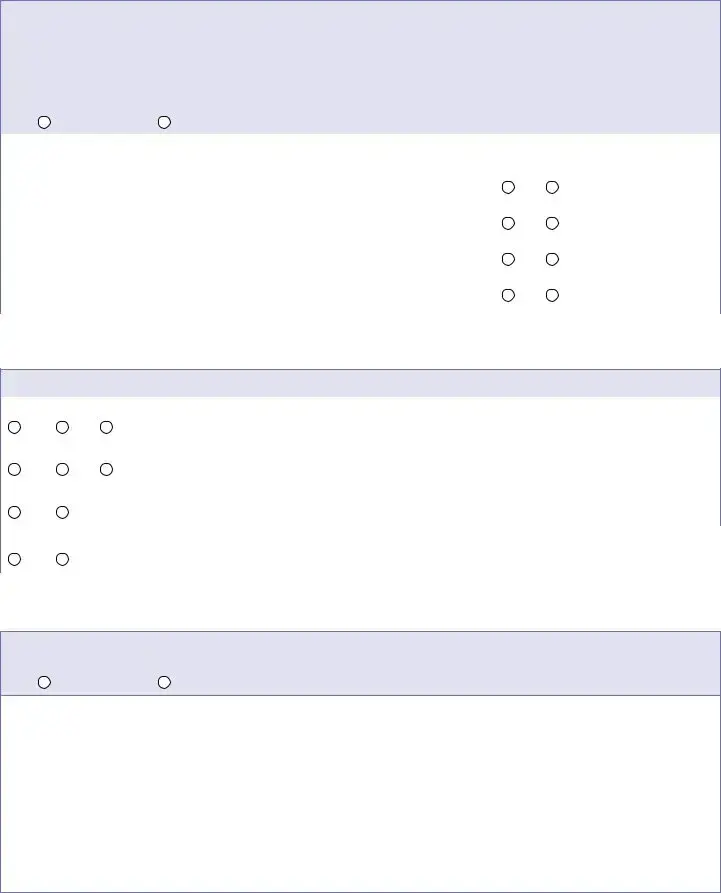
26. Did you get money this month or do you expect to get money next month from sources other than work?
Include: ■ Social Security |
■ Spousal support |
■ Unemployment |
■ Interest |
■ Supplemental Security Income (SSI) |
■ Workers' compensation |
■ Veterans' benefits |
■ Dividends |
■ Retirement or pension payments |
■ Public assistance payments |
■ Rental income |
■ Trusts |
■ Payments from a contract for deed |
■ Annuities |
■ Any other payments |
Yes – fill in below |
No |
|
|
|
|
|
|
|
|
|
|
|
|
|
|
Type of income |
|
Amount |
How often received? |
|
|
Has this income ended? |
|
|
$ |
|
|
|
Yes |
No |
IF YES, END DATE (MM/DD/YYYY) |
|
|
|
|
|
|
|
|
|
|
|
|
|
|
|
|
|
|
$ |
|
|
|
Yes |
No |
IF YES, END DATE (MM/DD/YYYY) |
|
|
|
|
|
|
|
|
|
|
|
|
|
|
|
|
|
|
$ |
|
|
|
Yes |
No |
IF YES, END DATE (MM/DD/YYYY) |
|
|
|
|
|
|
|
|
|
|
|
|
|
|
|
|
|
|
$ |
|
|
|
Yes |
No |
IF YES, END DATE (MM/DD/YYYY) |
|
|
|
|
|
|
|
|
|
|
|
|
|
|
|
|
You must provide proof of this income. Proof may be award letters, copies of checks, tax forms, court orders, or other documents.
27. Expenses
If you are blind or have a disability, do you have work expenses? |
IF YES, TYPE OF EXPENSE(S) |
|
MONTHLY AMOUNT |
Yes |
No |
Not applicable |
|
|
|
$ |
|
|
|
|
|
If you have a legal guardian or conservator, do you pay a fee? |
IF YES, FEE PAID |
|
|
Yes |
No |
Not applicable |
$ |
|
|
|
|
|
|
|
Do you have court-ordered child or medical support payments taken from your income? |
|
IF YES, AMOUNT PER MONTH |
Yes |
No |
|
|
|
$ |
|
|
|
|
|
|
|
|
|
|
|
Do you have court-ordered spousal maintenance payments taken from your income? |
|
IF YES, AMOUNT PER MONTH |
Yes |
No |
|
|
|
$ |
|
|
|
|
|
|
|
|
You must provide proof of these expenses. Proof may be court orders or paystubs.
28.Do you have medical expenses? Include health insurance premiums, pharmacy co-pays, doctor office co-pays and all unpaid medical bills.
LIST EACH MEDICAL EXPENSE
You must provide proof of these expenses. Proof may be receipts of pharmacy co-pays, unpaid medical bills, or notices of health insurance premiums.
Page 8 of 11 |
DHS-3531-ENG 5-17 |
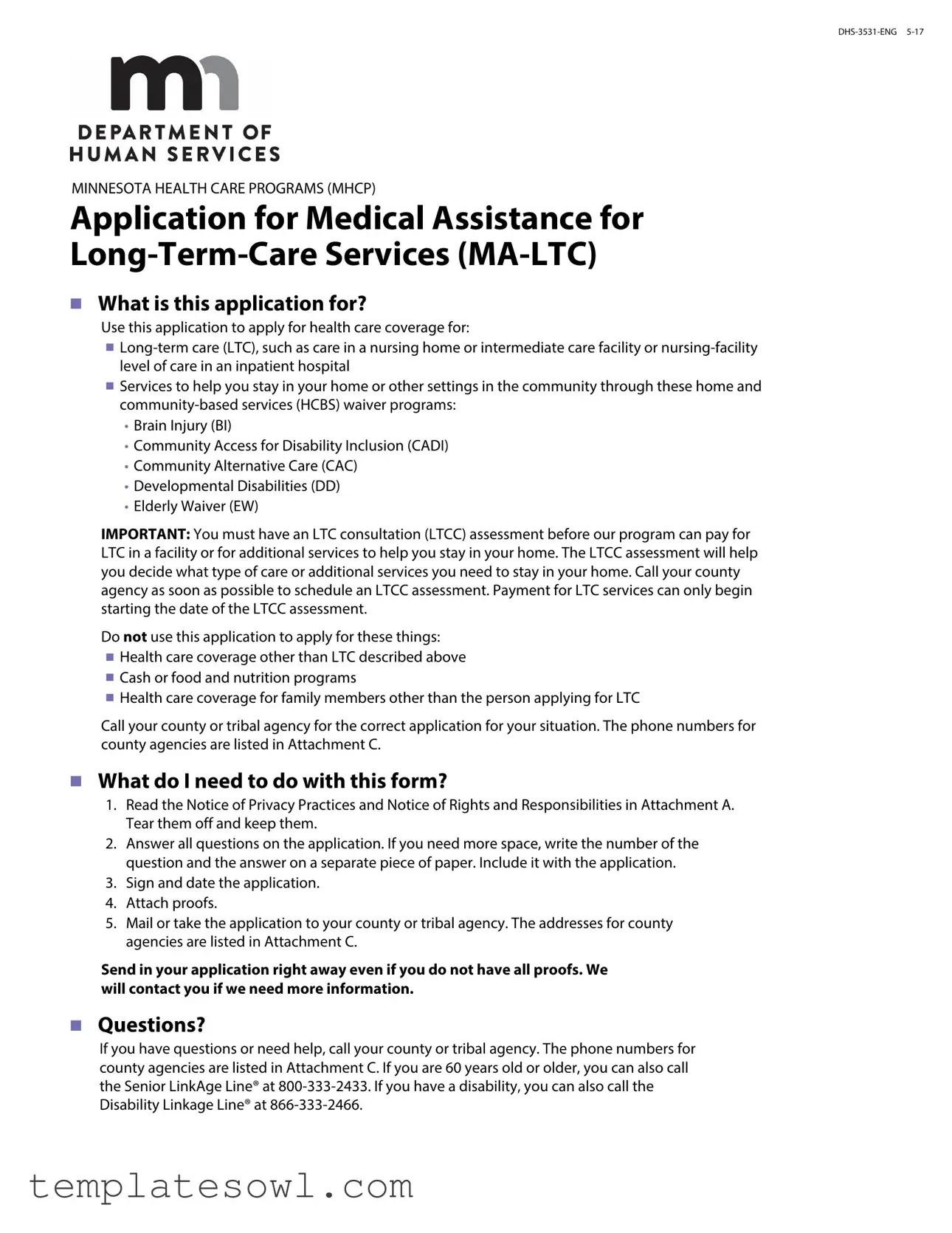

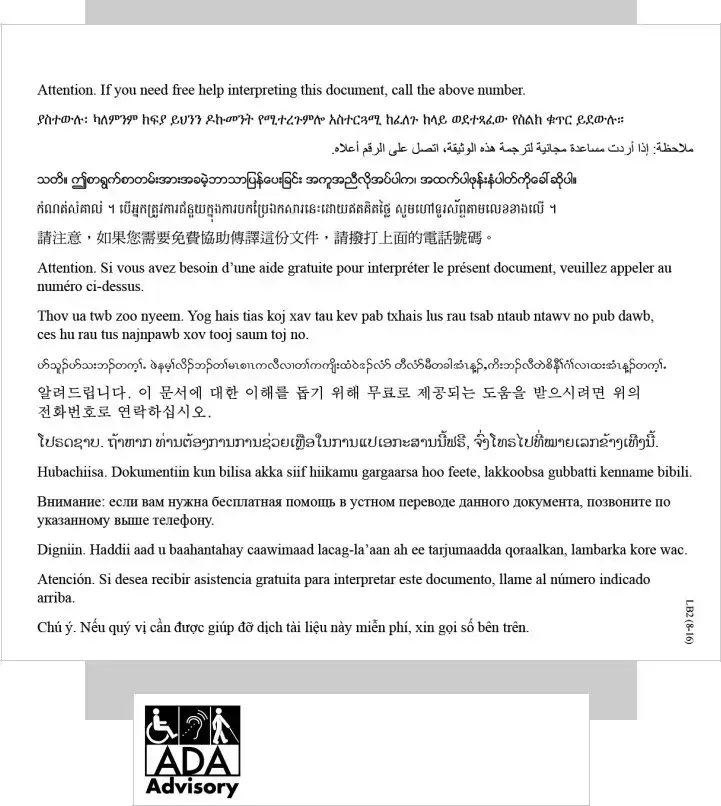
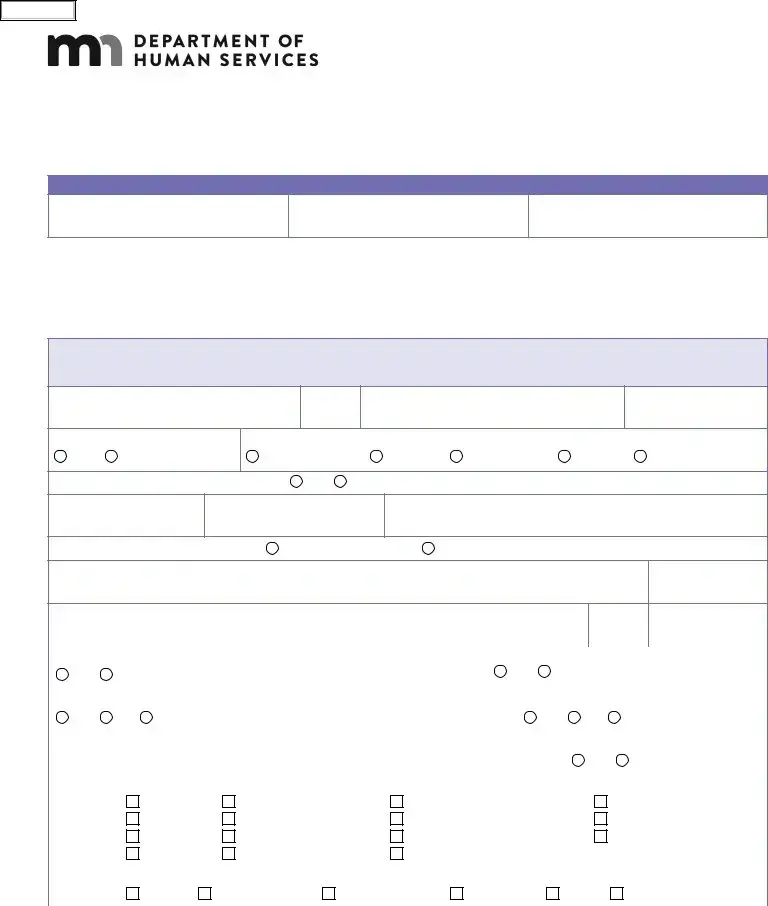
 Yes
Yes  No
No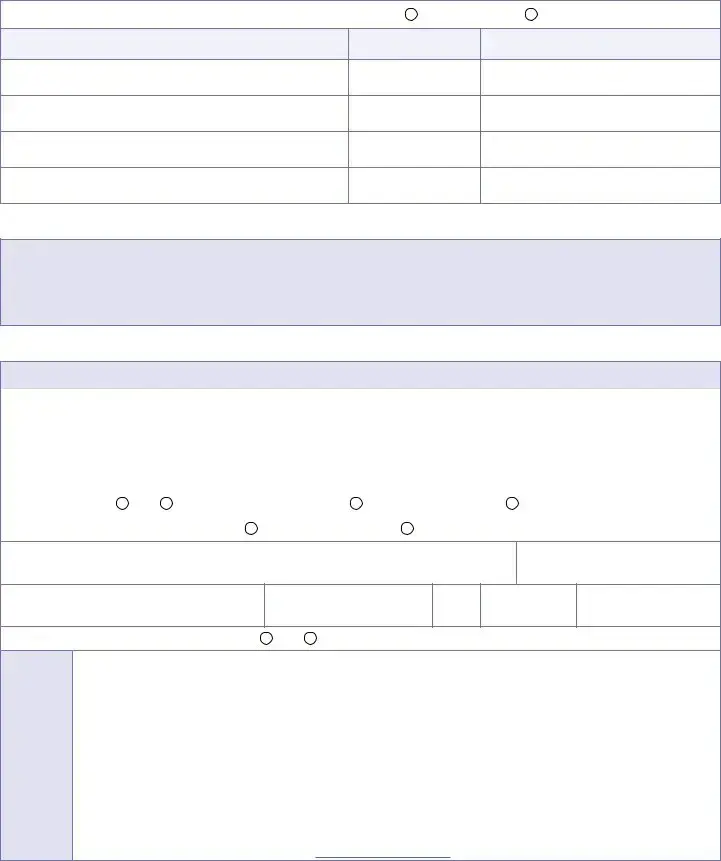
 Yes – you need to complete and include Appendix A
Yes – you need to complete and include Appendix A  No
No I live in a hospital, nursing home, treatment facility or detox center.
I live in a hospital, nursing home, treatment facility or detox center. I have my own housing (rent, pay a mortgage or share housing costs with a roommate).
I have my own housing (rent, pay a mortgage or share housing costs with a roommate). l live with family or friends because of economic hardship.
l live with family or friends because of economic hardship. I live in an emergency shelter.
I live in an emergency shelter. I live in a service provider’s housing (foster home or group home).
I live in a service provider’s housing (foster home or group home). Unknown
Unknown I live in a jail, prison or juvenile detention facility.
I live in a jail, prison or juvenile detention facility. I live in a hotel or motel.
I live in a hotel or motel. I decline to answer.
I decline to answer. I live in a place not meant for housing (anywhere outside, a vehicle, an abandoned building, a bus or train station, or an airport). In which county do you live?
I live in a place not meant for housing (anywhere outside, a vehicle, an abandoned building, a bus or train station, or an airport). In which county do you live?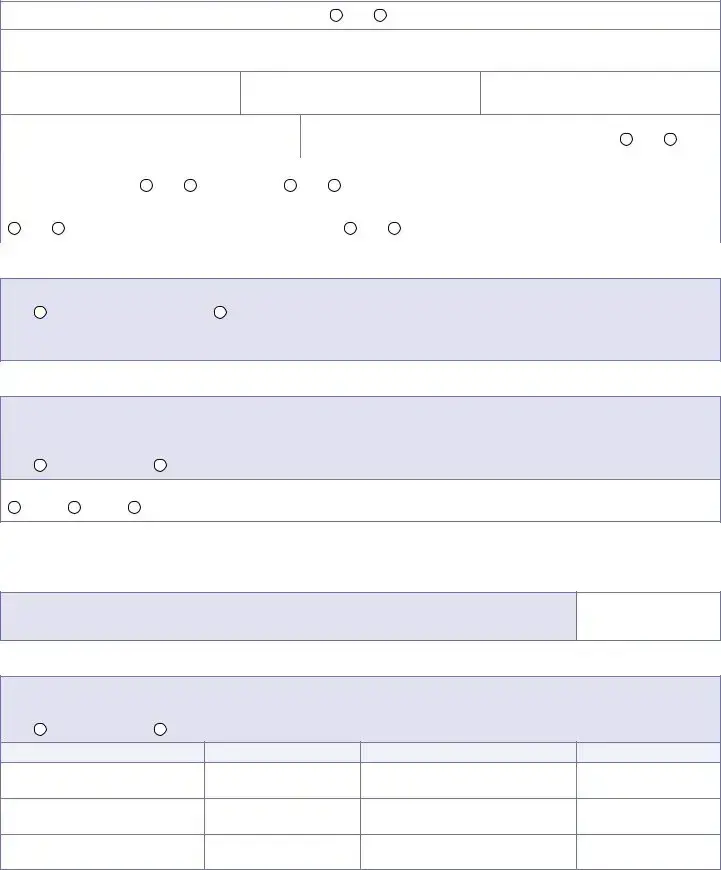
 Yes
Yes  No
No